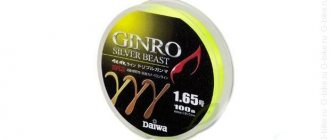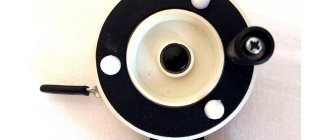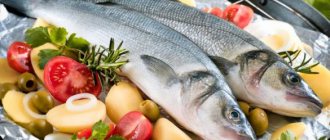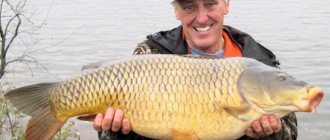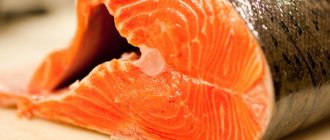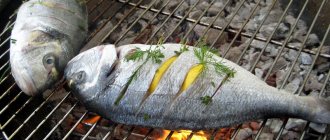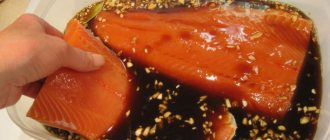Created: 07/01/2020
Updated: 02/04/2021 17:10:32 Share:
Author of the article: Vladislav Samoshkin
*Review of the best according to the editors of expertology.ru. About the selection criteria. This material is subjective in nature, does not constitute advertising and does not serve as a purchase guide. Before purchasing, consultation with a specialist is required.
No float rod can do without fishing line. At the same time, you can easily go to the nearest fishing store and buy a cord for very little money. And you will encounter certain problems when using it. Don't want to get into this situation? If so, check out our review of the best fishing lines for float rods.
Characteristics
The main criterion for selection is the fishing location and the type of fish. The fishing line should be thin enough not to spook the prey and at the same time strong enough not to break. Characteristics such as length, thickness and strength are written on the packaging.
- For successful fishing with medium-sized fish, synthetic thread should not go beyond 0.15, large ones 0.3 mm. Its quality must be at its best. The traditional length is 9/10 of the entire length of the rod. It will not get underfoot and will allow you to remove the bait.
- There is no need to choose too bright fishing lines for a float rod; people pay attention to the color in the store. When fishing at night, choose a black or dark brown one, and when fishing during the day, choose one that will blend into the background of the sky.
- The range offers synthetic threads with alternating dark and light areas, which makes it almost invisible in certain lighting conditions. Fish in thickets of grass with green tackle.
- Many synthetic threads presented in the store are conditionally sinking. Strong tension over a long distance and their imperfectly clean surface do not allow them to sink. To eliminate this effect, they are lubricated with oil or fat. Only special degreasing and lubrication products are used, otherwise you can ruin everything.
Choose high-quality synthetic thread from trusted companies that are leaders in the market. Its thickness should correspond to its length. The fishing line for a float fishing rod should not have any unevenness or bubbles, it should be smooth.
There are several types of fishing lines:
- monofilament;
- fluorocarbon;
- wicker
Wicker
The braided thread is very sensitive, any touch of the prey to the bait is noticeable. It does not stretch, it should be placed for good hooking.
But it also has disadvantages, such as:
- acquisition of terryness over time;
- she could hurt her hand;
- it is very noticeable in the water and is matched to the color of the reservoir, which is inconvenient;
- Another disadvantage is the high price.
Convenient to use when fishing in swampy places at great depths. The main advantage of braid is strength.
Monofilament
Very good for beginners because:
- does not get tangled or fray;
- suitable for rocky bottom;
- it is easy to install.
It has average characteristics and a reasonable price, so it is in great demand. Disadvantages include low sensitivity and constant stretching in water.
Fluorocarbon
- such synthetic threads are invisible in water; there are several colors available;
- it is not durable enough and expensive;
- Frurocarbon is good to use in familiar places when hunting medium-sized prey.
It leaves all the bends of the reel on itself and constantly gets tangled.
Float
A fishing line for float fishing should include a main thread and a leader.
The task of the leash is to break while maintaining the main thread:
- The difference between the strength of the leash and the main thread should be about 300 g. The main thread should not break.
- The leash should not attract the attention of the fish.
- There are high demands on the quality of the main thread.
In order to compare several types, you need to see the loop of one into the loop of the other and break it. The one that survived is the strongest for float equipment.
Which fishing line is better to choose
Monofilament
Monofilament fishing line for float fishing rods has proven itself due to its ease of use and affordable price. Among the advantages of using this material are simple installation and protection against abrasion; in addition, the product is suitable for rocky bottoms. For each type of fishing, a special fishing line should be selected; for example, fly rods require high-strength materials with a small diameter. Fishing rods do not accept springs coming out after casting. Match structures must be equipped with a fishing line that sinks quickly and does not take on an arched shape.
The best monofilament line for a float rod is the Maver Smart Dual Band, a Japanese product that provides long-distance casting with minimal stretch. The product sinks quickly, is wear-resistant and can be used perfectly at any time of the year.
A monofilament type product is considered the main fishing line for a float fishing rod.
Read more
What types of reels are there for carp fishing?
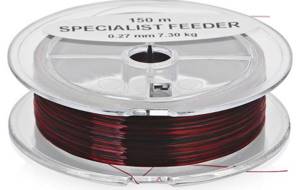
Monofilament fishing line has proven itself well due to its ease of use.
Fluorocarbon
Fluorocarbon fishing line for a float fishing rod should have such characteristics as invisibility in water, strength and mechanical memory. Unfortunately, the material is the most expensive among similar products, and sometimes it is difficult to find a strong and durable product. Among the shortcomings, users note periodic tangling of the fishing line and remnants of reel bends.
Fishermen quite often use fluorocarbon leashes. They are usually used in places where camouflage is the key to successful fishing. It is also advisable to use the products for catching fish species such as perch and pike perch. The most suitable models are leashes with a diameter of less than 0.35 mm. Ideal indicators would be 0.12-0.2 mm for catching perch and 0.23-0.3 mm for pike perch.
The leash is attached to the fishing line of the float rod using the “loop to loop” method. You can also use a carabiner, but this method can reduce the breaking load of the equipment and increase visibility, which will scare away prey. An equally common mounting option is to use a standard unit.
Many fishermen use a double leash made of fishing line on a float rod. This allows you to increase the number of fish caught, attract them and please the catcher himself. But there are also disadvantages of using double equipment: a decrease in the strength of the fishing line, the possibility of missing a bite and the occurrence of interference during the fishing process.
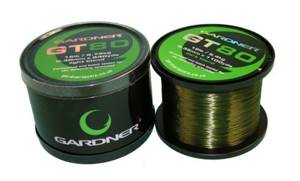
Fluorocarbon line is invisible in water
Fluorocarbon fishing line is often used as the main line for a float rod. If funds allow, why not.
Wicker
Braided lines are considered super sensitive, allowing you to see the slightest touch of prey on the bait. The main advantage of the product is minimal stretching. Among the disadvantages, users note the possibility of getting hurt on the material, the high cost of the product and quite high visibility in the water, which can scare away the fish.
Many anglers use braided spinning rods. The material comes in two types: braided braid and soldered braid. The advantages of using products are the strength of the material, good resistance to impact and minimal stretching. When casting over long distances, this is an ideal line that will not twist or break.
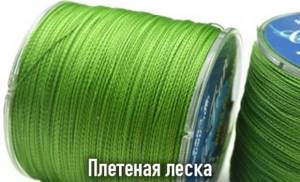
Braided lines have minimal stretch
Rating of the best fishing lines
Good quality of goods was noted from foreign manufacturers.
Let's look at the rating of monofilament lines for a float rod:
- Maver Smart Dual Band - originally from Japan. It does not have a circle in cross-section, it is good for hunting carp at long distances. Fast sinking line with long casting. It is successfully used in cold and warm seasons. It stretches minimally, has no mechanical memory, and is wear-resistant.
- Colmic xilo - good with a marmy rig. It does not reflect the period of use; it is intended for fly rods and Bolognese rods.
- DAIWA Team Daiwa Line - with low stretch, does not wear out, suitable for Bolognese rods.
- Shimano Blue Wing Line 100MT - inexpensive, made in Japan, perfect for beginners. This is a good quality product at an affordable price. Minimally stretches and is resistant to mechanical stress.
Here it is important to choose the optimal combination of price, strength, quality, and professional level. It is important to understand what kind of prey you want to bring home: large or small.
Types of fishing lines for spinning
Today, pike fishing line is divided mainly into two types: monofilament and braided line. Each species has its own special characteristics, which are selected depending on the conditions and fishing methods.
Monoleskies
Monofilament fishing line, or as it is popularly called monofilament line, is made from nylon (polyamide). From the name it is already clear that this is a solid monolithic single-filament fishing line. It itself also has different properties, depending on the technology of its production.
Fishing line for pike
More elastic, soft ones are made from monofilament. This line fits better on the reel and, accordingly, contributes to longer casting of the bait. Mono lines are also made from a mixture of different types of polyamide. This type is called copolymer. It has great tensile strength and rigidity. The next type is copolymer. These monofilament lines are manufactured using complex high-tech processes. Due to this, they have different specific properties: sinking, resistant to ultraviolet radiation, etc.
Braids
Braided fishing line, or as it is popularly called braided line, is more durable than monofilament fishing line. Therefore, it has gained more interest among most fishermen.
From the name it is clear that such a fishing line is woven from a large number of fibers. This is how its best strength is achieved. Braid is further divided into two types. The first is fibers or flagella woven together, and the second is fibers or flagella woven together and covered with a shell. The second type is visually similar to monofilament fishing line. Braided fishing line has low elasticity, high strength and softness.
About
Bologna
- the fishing line for the Bolognese fishing rod must withstand both fast currents and quiet surfaces;
- when casting, it should not spring back and straighten easily;
- the diameter depends on the flow speed, the most acceptable is 0.14-0.16 mm;
- floats weighing 5-7 g;
- withstands a load of bream or ide of 2-3 kg;
- elongation depends on the distance. Longer spacing implies less extensibility. Soft threads will not allow you to fish over long distances.
In strong currents and large kilometers, it is good to use sinking lines, and in standing water - floating lines.
Choice depending on the type of fish and location
It is worth selecting fishing lines, taking into account the season and type of fish, the place of fishing.
- In places with snags and quarries, they should be of high quality, dark in color and long.
- For winter fishing, more durable types are used than for summer fishing.
Which fishing line for a float rod to choose when catching large prey? In Russian reservoirs they love to catch crucian carp. This fish is cautious and timid.
crucian carp
- If the crucian carp swims in the upper water column, then a rig with a diameter of 0.14 is suitable. For deep-sea fishing, its diameter should be 0.18 mm.
- A correctly selected monofilament thread will be the most interesting option; choose its color wisely.
If you don’t want to dye your fishing thread, choose a fluorocarbon thread for your fishing rod that matches the shade of the water surface. It will withstand crucian carp calmly, although it is not particularly durable.
Carp
The next no less interesting character is the carp.
- Experienced craftsmen advise doing this: attach a thread with a diameter of 0.2-0.28 to a float rod. This will dampen the fish's resistance.
- If there are a lot of plants in the water, then select a diameter of 0.3 mm.
Perches, brushes, and roaches are easy to catch using a rig with a diameter of 0.10-0.12 mm. This is quite enough for small production.
You can talk for a long time about which fishing line is better and which fishing line you need to choose for a float fishing rod, but the best thing is to collect the necessary gear and go fishing. Have a nice holiday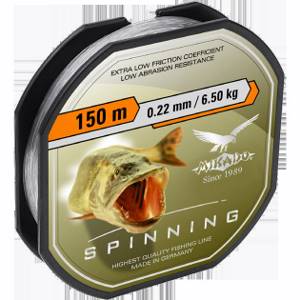
How to choose the right fishing line for a float rod
There are several basic criteria that you should rely on when purchasing fishing line:
- the efficiency of fishing depends on the casting distance, so this indicator should not be neglected;
- the material must be selected based on the type of fishing (it can be a fly, match or Bolognese fishing rod);
- it is important to consider the place where fishing will take place (a pond where the water is standing, or a river with a fast current);
- It is equally important to look around and take into account the level of vegetation (presence of reeds, algae);
- The results of fishing are also affected by water; it can be cloudy, green or transparent.
You also need to choose the right thickness of fishing line for the float rod. For example, for crucian carp, braided material from 0.09 mm is suitable, monofilament material - up to 0.18 mm; while for carp it is better to use monofilament fishing line up to 0.28 mm in size. To understand what diameter of fishing line to put on a float rod, you should focus on the type of fish, as well as the ability to “hook” prey with a landing net.
The line for the feeder must be rigid and durable, capable of withstanding heavy loads. When choosing a material, you should pay attention to the following criteria: rigidity, minimal elongation, durability, accessibility, and ideally abrasion protection. On the product market you can find fishing line from a variety of manufacturers, but it is recommended to give preference to trusted companies, although the cost of such products will be slightly higher.
Many fishermen use sinking line for a float rod. The ideal period for using the product is mid-summer. This is due to the fact that many species of fish sink to the bottom and sinking material is an ideal solution for successful fishing.
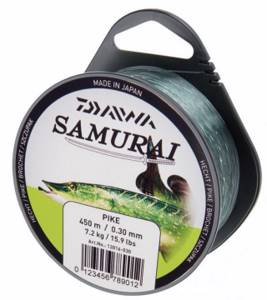
If you use special equipment, you should buy suitable materials for it. Thus, the ideal fishing line for leashes on a float fishing rod would be a monofilament or braided type product. This is due to the special characteristics of the product. The line is soft and invisible.


